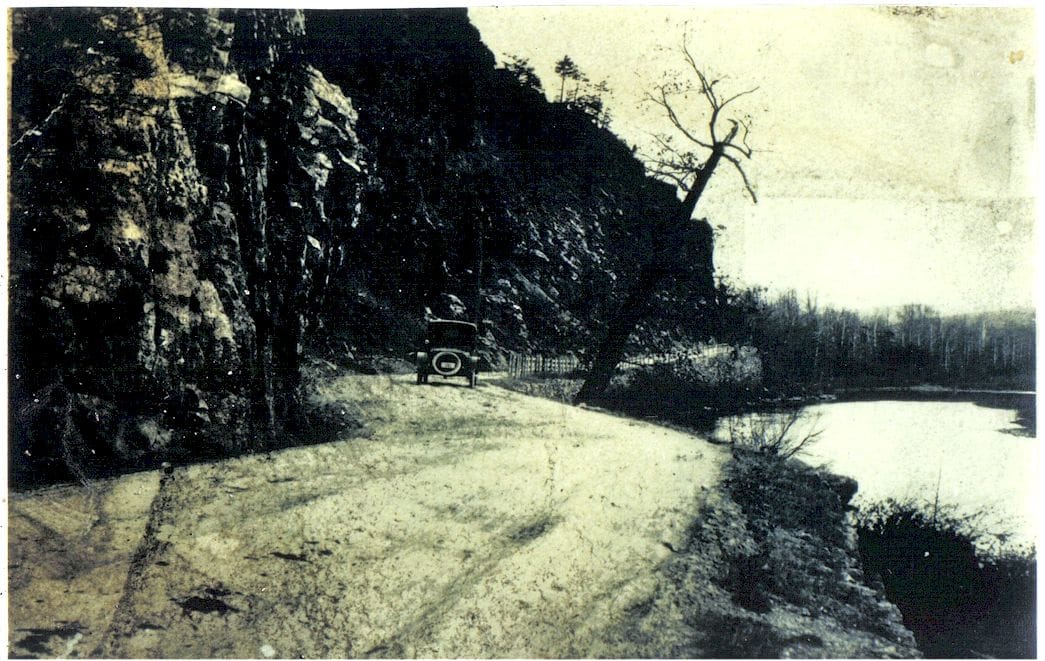
There are several theories of how Fulks Run got its name. Perhaps the small creek running through the area into the Shenandoah River helped prompt the title. Or perhaps the name came from a completely different source. That same little creek mentioned above ran through the property of an early settler to the area—a gentleman by the name of John Fulk. Among other economic pursuits, Mr. Fulk distilled a fine whiskey (which, by the way, was perfectly legal at the time). This brew was of such satisfactory quality that word spread quickly when a batch was ready for sale – when Fulk’s “run” was complete.
Before the Civil War, several Fulk families kept slaves to help them run their large agricultural endeavors. And although Fulks Run is less than ten miles from the West Virginia line, its residents fought in the Confederate army. Historian Patricia Turner Ritchie notes that post war records show that at least 40 men from the Fulks Run area fought for the South.
“Captain” George Fulk was an officer in the Southern Army. John Wayland writes in Virginia Valley Records that Fulk served as 2nd Lieutenant but resigned from the CSA in Romney. Since Fulk was an officer, he had the right to resign his position, however his commander, John Winfield, of Broadway expected him to return later. Records indicate that Fulk never returned to the military.
History tells us that the road that runs through Fulks Run (Rt. 259) was once a Native American trail. The stretch of the trail that ran between Broadway and Fulks Run was not a safe passageway. Along this section, the road crossed the river in quite a few places, making travel challenging and sometimes hazardous. In the late 1880’s, the course of the road was changed so that it crossed the river only two places between Broadway and Dovesville (now Bergton)
Today, Fulks Run has a population of about 1700. The town has three grocery stores, a post office, several churches and a school. Fulks Run is also the home of the famous Turner Ham House, the only producers of sugar-cured ham in the Shenandoah Valley.
Before the Civil War, several Fulk families kept slaves to help them run their large agricultural endeavors. And although Fulks Run is less than ten miles from the West Virginia line, its residents fought in the Confederate army. Historian Patricia Turner Ritchie notes that post war records show that at least 40 men from the Fulks Run area fought for the South.
“Captain” George Fulk was an officer in the Southern Army. John Wayland writes in Virginia Valley Records that Fulk served as 2nd Lieutenant but resigned from the CSA in Romney. Since Fulk was an officer, he had the right to resign his position, however his commander, John Winfield, of Broadway expected him to return later. Records indicate that Fulk never returned to the military.
History tells us that the road that runs through Fulks Run (Rt. 259) was once a Native American trail. The stretch of the trail that ran between Broadway and Fulks Run was not a safe passageway. Along this section, the road crossed the river in quite a few places, making travel challenging and sometimes hazardous. In the late 1880’s, the course of the road was changed so that it crossed the river only two places between Broadway and Dovesville (now Bergton)
Today, Fulks Run has a population of about 1700. The town has three grocery stores, a post office, several churches and a school. Fulks Run is also the home of the famous Turner Ham House, the only producers of sugar-cured ham in the Shenandoah Valley.
 RSS Feed
RSS Feed
